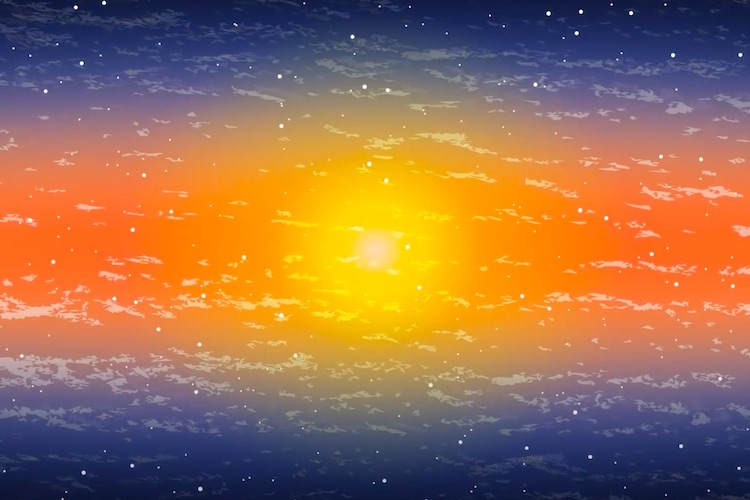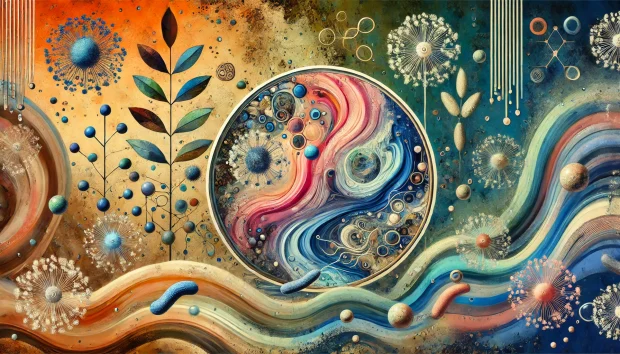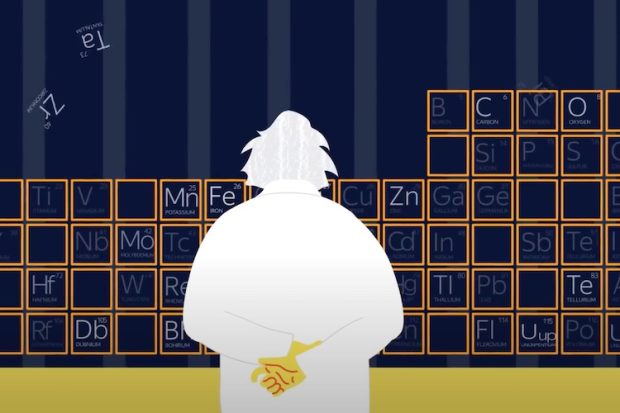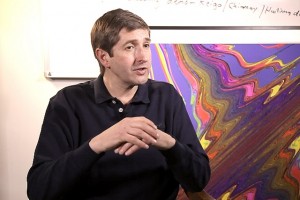Mausoleum Gonbad-e Qābus
Chemist Artem Oganov on Penrose’s patent, quasicrystals and connection between art, mathematics and chemistry

On January 15, 2015 Journal of the American Chemical Society published a paper “Photochemical Nitrogen Conversion to Ammonia in Ambient Conditions with FeMoS-Chalcogels” describing novel method of transforming one of the most stable molecules. We have asked one of the authors of this research, Prof. Mercouri Kanatzidis from Northwestern University, to comment on this work.
Our work is about a new material that can convert nitrogen to ammonia at room temperature, at ambient conditions, such as room pressure, and in aqueous solution – all while using light.
Why is this important? Nitrogen is one of the most stable molecules on the planet. It’s really inert, and it’s difficult to make it react with anything else. For this reason, normally one uses very high temperatures, 300-500 °C or above, and high pressures, because it doesn’t react. However, ammonia is a very useful chemical, because it’s used in fertilizer, which is used to grow crops and food around the world, increasing the yields and therefore feeding more people.

Also, ammonia is used by plants so that they can make amino acids, and then convert those to proteins. So it’s very important for plant growth. Plants have solved this problem billions of years ago by having some bacteria in their roots that contain the enzyme, called nitrogenase. Nitrogenase takes nitrogen and using a co-factor that it has in its structure (the co-factor molecule has iron, molybdenum and sulfur) through a series of complicated processes converts it to ammonia. The bacteria does this next to the roots, then the root brings the ammonia into the plant. This is called symbiosis between bacteria and the plant.
It has been the subject of debate and interest for about 70 years. How does nitrogenase work? Is it possible to convert nitrogen to ammonia at room temperature? Right now we do this on a massive scale using iron cataylsts, high pressure (300 atm), 300 °C, and we do it in factories. This is how we make our fertilizer.
But there has always been an interest in doing this at room temperature without any extra pressure. So we thought – if nitrogenase uses iron-molybdenum-sulfur cluster molecule in its structure, and uses this as a catalyst to convert to ammonia, can we find an iron-molybdenum-sulfur cluster ourselves that we can make in the lab, and make a material out of it by putting it into an inorganic structure? Then we could use this as a catalyst by providing it protons and nitrogen in water, and the energy comes from light (you need the energy to convert nitrogen to ammonia).
In a way this was a crazy experiment, because we almost believed it would not work, but it was easy enough to try, and we did it anyway. We put the material in solution, and after a few days of irradiation we did the test for ammonia and it came out positive. We were very surprised and excited that somehow this material was able to work. Finally we had to prove that the ammonia was coming from nitrogen, so that’s what we explained in this paper, how we proved that this is coming from nitrogen and not from some other source.

For the past 40 years many groups tried to make iron-molybdenum-sulfur molecules. They were trying to find molecules that were similar to the co-factor in nitrogenase, because they wanted to see if they could emulate or imitate the electronic properties of the co-factor. So they made these molecules and none of them were exactly like the co-factor. They were similar but not the same. The co-factor has still not been synthesised by any chemist. It’s only the enzyme that has this particular structure of the co-factor. But chemists have made similar molecules that have iron-molybdenum-sulfur. That’s what we did, we went back to the literature and picked one of these iron-molybdenum-sulfur molecules to make our material.
When they did this work in the past 40 years, none of these molecules were shown to bind to nitrogen or react with nitrogen. They all had the same elements, iron-molybdenum-sulfur as the co-factor but not the same structure. But they never did anything with respect to converting nitrogen to ammonia. No one thought to photolyze them. We used light to excite them, and no one had done that before.
So we took one of these molecules and polymerised it in order to make a material with an extended structure that we call a chalcogel. It’s an amorphous structure that is insoluble. When the cluster becomes part of that structure, it becomes more stable than when it was in molecular form, and that’s why we can use it in water. The molecular forms that were done long ago were not stable with water. They would react with water and decompose. We put it into the chalcogel structure, we stabilised it.
Now that we demonstrated that this approach works, there are a number of new science questions and challenges that come up. Some of the science questions are, how does this work? What is the mechanism of the reaction? What is the first binding event? Another challenge is, can we make it faster? This reaction works, but it’s about thousand times slower than nitrogenase. That’s ok because nitrogenase has had a billion years to work, and we have only had a couple. If we can make it faster that would be very exciting because perhaps there would be a practical application. One crazy possible application is taking this catalyst, and instead of using fertilizer in the field, use the catalyst in the field. Let the catalyst use light from the sun and nitrogen from the atmosphere to do in situ ammonia generation for the plants. It’s crazy, because it has to become more stable against oxygen, but it’s good to dream.

Chemist Artem Oganov on Penrose’s patent, quasicrystals and connection between art, mathematics and chemistry

Physicist Ronald Walsworth on quantum mechanical transitions inside atoms, blue and red shift for GPS, and use...

Computer scientist Thomas Schmickl on bio-inspired robotics, virtual embryogenesis, and symbiotic multi-robot ...